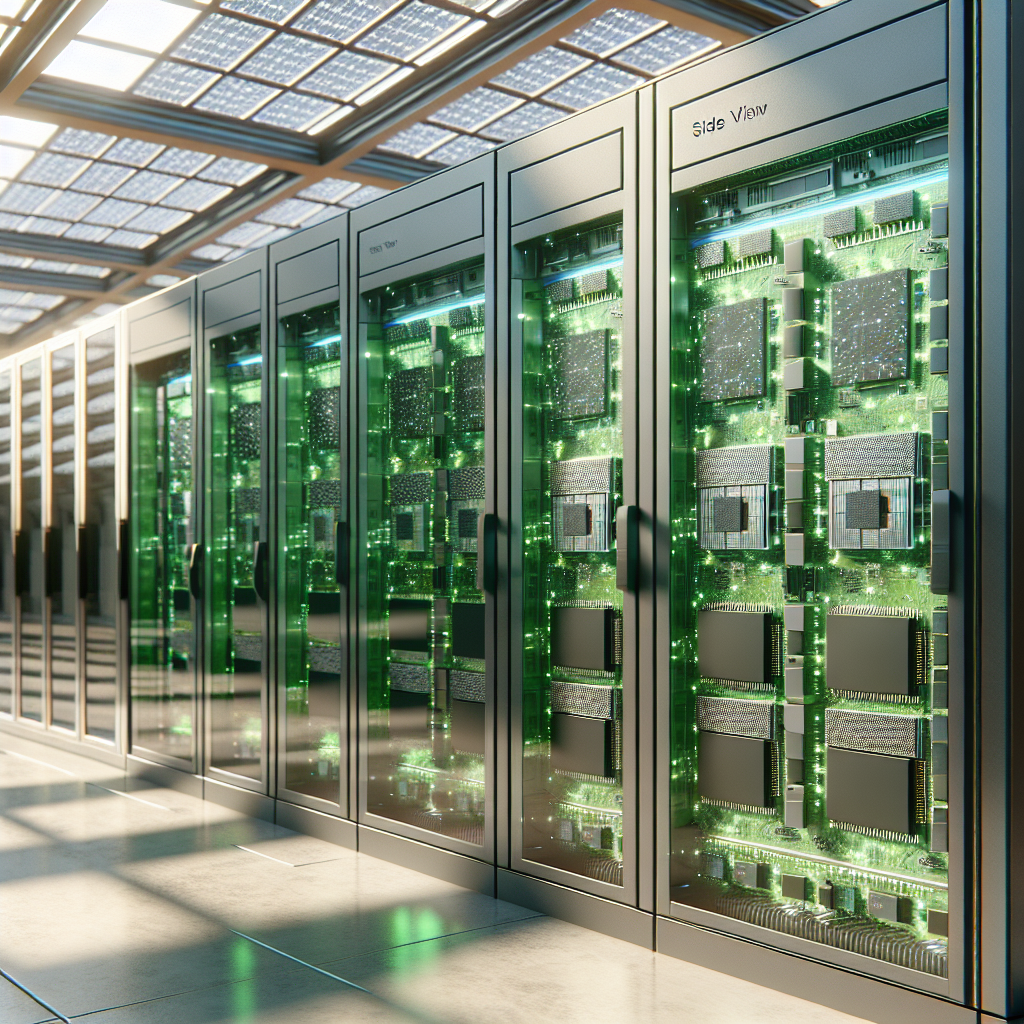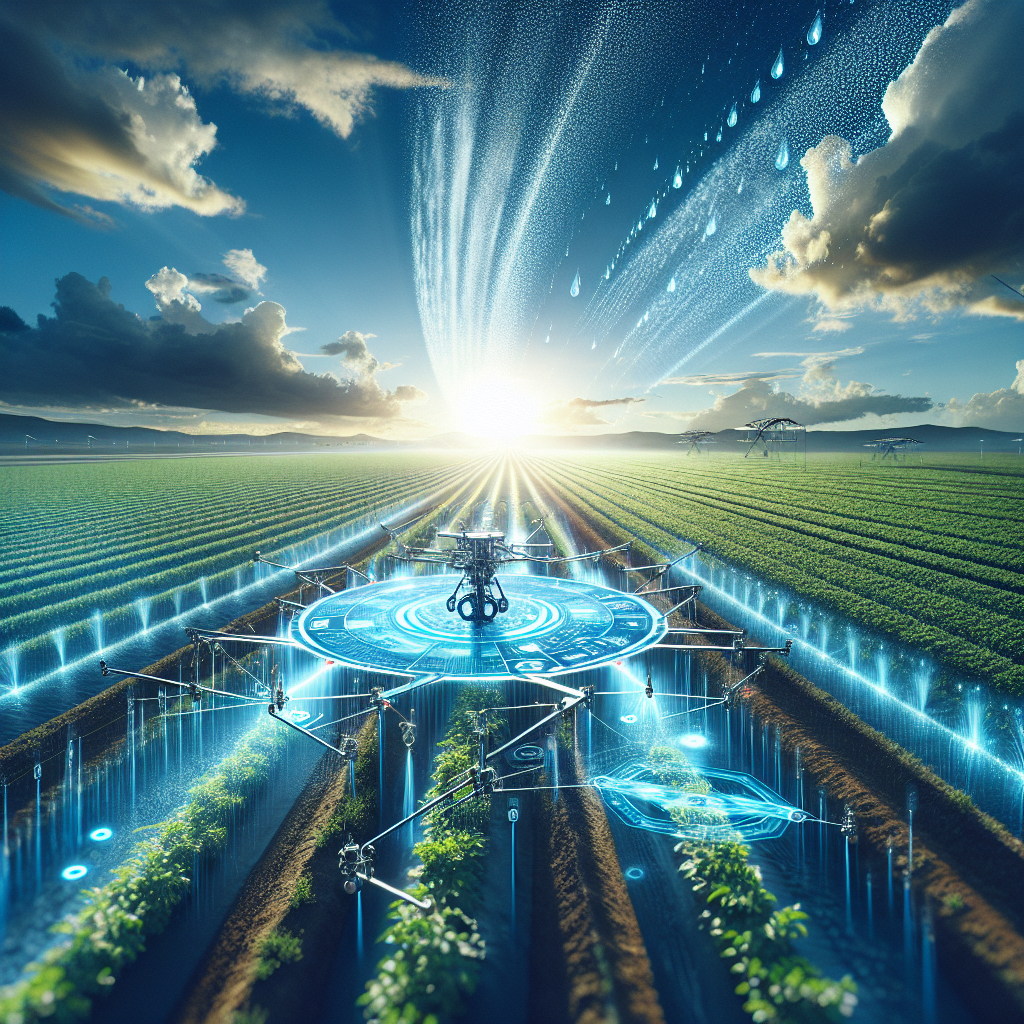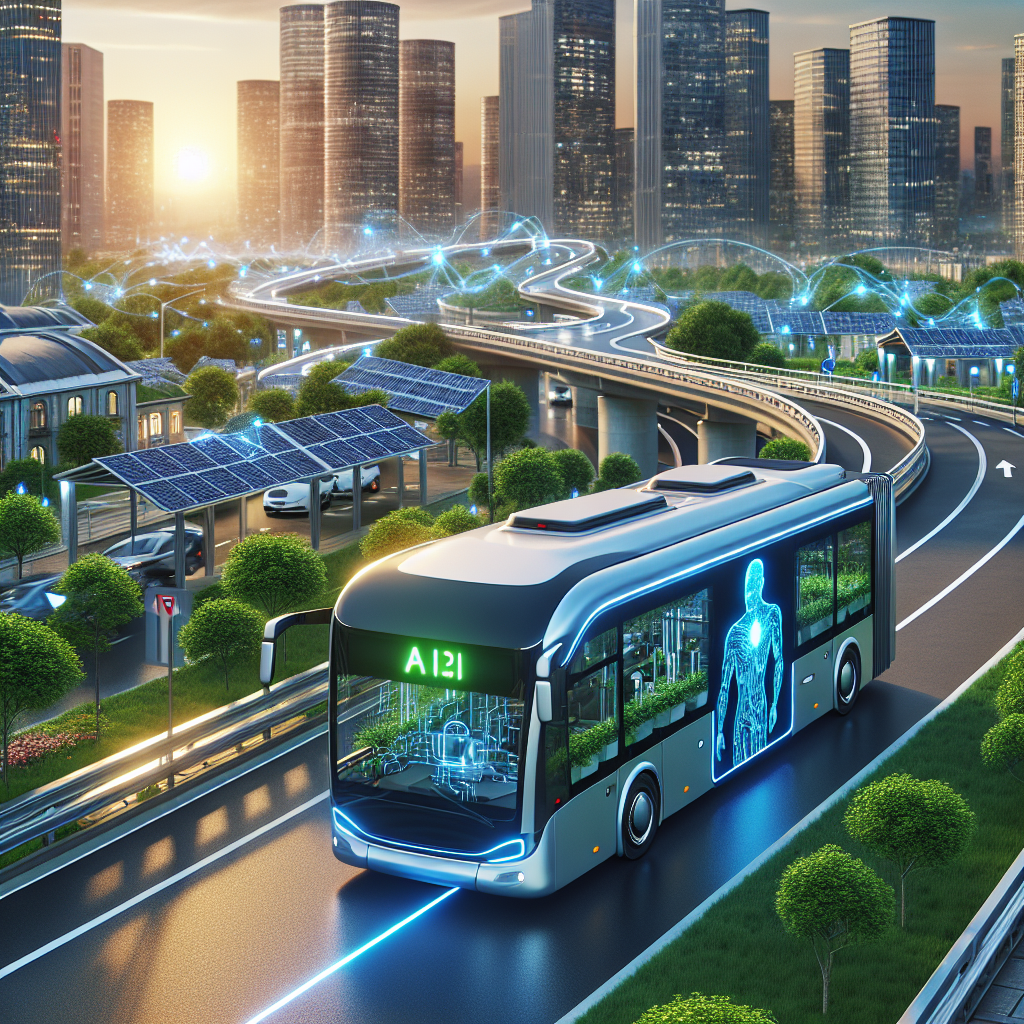Understanding AI in Sustainability
Artificial Intelligence (AI) is increasingly becoming a pivotal force in the realm of sustainability, offering innovative solutions to some of the most pressing environmental challenges. By analyzing vast amounts of data, AI systems can identify patterns and make predictions that were previously unattainable. This capability is particularly useful in understanding and mitigating the impacts of climate change. For instance, AI can optimize energy consumption in buildings, reducing waste and improving efficiency.
One of the primary ways AI contributes to sustainability is through energy management. Advanced AI algorithms can predict energy demand and adjust the supply accordingly, ensuring that resources are used efficiently. Smart grids, powered by AI, can distribute electricity in a more balanced manner, reducing the reliance on fossil fuels. This leads to a significant reduction in carbon emissions, contributing to a cleaner environment.
In addition to energy management, AI is also revolutionizing waste management. By using AI-driven sorting systems, recycling facilities can more accurately separate materials, increasing the percentage of waste that is recycled. This not only conserves natural resources but also reduces the amount of waste sent to landfills. The following table illustrates the impact of AI on waste management efficiency:
| Traditional Sorting | AI-Driven Sorting |
|---|---|
| 60% accuracy | 95% accuracy |
| High labor costs | Reduced labor costs |
| Slower processing time | Faster processing time |
Furthermore, AI plays a crucial role in sustainable agriculture by optimizing crop yields and reducing water usage through precision farming techniques. By analyzing soil health and weather patterns, AI systems can provide farmers with actionable insights to improve crop productivity while minimizing environmental impact. In essence, AI is not just a tool for sustainability; it is a transformative force that is reshaping how we approach environmental conservation.
Energy Efficiency with AI
Artificial Intelligence (AI) is playing a pivotal role in enhancing energy efficiency, leading to substantial reductions in energy consumption and costs. AI systems are capable of analyzing vast amounts of data to identify patterns and optimize energy usage in real-time. For instance, AI algorithms can adjust heating, ventilation, and air conditioning (HVAC) systems based on occupancy and weather forecasts, ensuring minimal energy wastage.
The use of AI in smart grids is another area where significant improvements in energy efficiency are being realized. Smart grids utilize AI to better manage electricity distribution, predict energy demand, and integrate renewable energy sources. This optimization not only reduces energy loss but also enhances the reliability of energy supply. Below is a table illustrating the impact of AI on energy consumption in various sectors:
| Sector | Energy Savings (%) |
|---|---|
| Residential | 20% |
| Commercial | 25% |
| Industrial | 30% |
Smart home devices powered by AI, such as learning thermostats and energy-efficient lighting systems, further contribute to energy efficiency. These devices learn user preferences and usage patterns to automatically adjust settings for optimal energy savings. For example, an AI-driven smart thermostat can reduce heating and cooling costs by up to 15% by adapting to the homeowner’s schedule.
- AI-driven energy management systems can predict peak energy usage times and adjust energy consumption accordingly.
- Machine learning algorithms are used to forecast energy needs and manage the supply from renewable sources like solar and wind.
- AI can also identify equipment inefficiencies, suggesting maintenance or upgrades to improve energy performance.
Smart Homes for Eco-Friendly Living
Smart homes are rapidly becoming a cornerstone of sustainable living, leveraging artificial intelligence to optimize energy consumption and reduce environmental impact. AI-powered smart home systems can intelligently manage lighting, heating, and cooling, ensuring that energy is used efficiently and only when needed. For instance, smart thermostats learn the habits of residents and adjust temperatures accordingly, potentially reducing heating and cooling expenses by up to 30%. This not only lowers utility bills but also conserves valuable energy resources.
Another significant aspect of AI in smart homes is waste management. AI-enabled devices can help households sort waste more effectively, identifying recyclable materials and reducing the amount of waste sent to landfills. Some smart trash cans are equipped with sensors and AI algorithms that recognize different types of waste, providing users with suggestions on how to dispose of items correctly. This contributes to a more sustainable lifestyle by promoting recycling and minimizing environmental harm.
Smart home technology also enhances water conservation. AI systems can monitor water usage patterns and detect leaks early, preventing water wastage. For example, smart irrigation systems adjust watering schedules based on weather predictions and soil moisture levels, ensuring gardens receive the right amount of water without excess. This targeted approach to water management not only supports environmental sustainability but also helps homeowners save on water bills.
| Feature | Benefit |
|---|---|
| Smart Thermostats | Reduce energy consumption by up to 30% |
| AI Waste Management | Improves recycling and reduces landfill waste |
| Smart Irrigation | Optimizes water usage based on real-time data |
AI-Driven Waste Management
AI-driven waste management is transforming the way we handle waste, making the process more efficient and environmentally friendly. By leveraging advanced algorithms and machine learning models, AI systems can sort and categorize waste more accurately than humans, significantly reducing the amount of waste that ends up in landfills. Through the use of smart sensors and cameras, AI can identify different types of waste materials, such as plastics, metals, and organic matter, and ensure they are directed to the appropriate recycling or disposal facilities.
One of the key benefits of AI in waste management is its ability to optimize collection routes. By analyzing data on waste generation patterns, AI systems can create more efficient collection schedules that reduce fuel consumption and lower greenhouse gas emissions. This not only saves money for waste management companies but also contributes to a cleaner environment. Additionally, AI can predict future waste trends, allowing municipalities to plan better and implement proactive measures to handle waste more effectively.
AI technologies are also being used to develop innovative solutions for waste reduction. For instance, smart bins equipped with AI can provide real-time feedback to consumers, encouraging them to recycle correctly and reduce contamination in recycling streams. Furthermore, AI can help in the development of new materials that are easier to recycle or biodegrade, promoting a circular economy. By integrating AI into waste management practices, we can move towards a more sustainable and environmentally responsible future.
| Benefits of AI in Waste Management | Impact |
|---|---|
| Accurate Waste Sorting | Reduction in landfill waste |
| Optimized Collection Routes | Lower fuel consumption and emissions |
| Real-time Consumer Feedback | Improved recycling rates |
| Predictive Waste Analysis | Enhanced waste management planning |
Sustainable Agriculture with AI
Sustainable agriculture is increasingly critical as the global population grows and environmental challenges become more pressing. AI technologies are playing a pivotal role in transforming agricultural practices, making them more efficient and environmentally friendly. By leveraging AI, farmers can optimize resource use, reduce waste, and increase crop yields, contributing to a more sustainable food system.
One of the key areas where AI is making an impact is in precision farming. Through the use of AI-driven data analytics, farmers can monitor soil conditions, weather patterns, and crop health in real-time. This allows for more accurate predictions and timely interventions. For instance, AI algorithms can process data from sensors and satellite images to recommend the optimal amount of water, fertilizers, and pesticides needed, thereby minimizing environmental impact. Below is a table illustrating potential resource savings through AI:
| Resource | Traditional Methods | AI-Optimized Methods | Potential Savings |
|---|---|---|---|
| Water | 1000 liters/acre | 700 liters/acre | 30% |
| Fertilizers | 50 kg/acre | 35 kg/acre | 30% |
| Pesticides | 20 kg/acre | 14 kg/acre | 30% |
Moreover, AI-powered robotics and automation are increasingly used to perform labor-intensive tasks such as planting, harvesting, and weeding. These technologies not only increase efficiency but also reduce the carbon footprint associated with traditional farming practices. AI robots can work around the clock with precision, ensuring minimal damage to the crops and soil. This results in a more sustainable agricultural process that aligns with the goals of reducing greenhouse gas emissions and conserving biodiversity.
Furthermore, AI contributes to sustainable agriculture by enhancing supply chain management. With AI’s predictive capabilities, farmers and distributors can better forecast demand and supply, reducing food waste. AI systems can analyze market trends, consumer behavior, and logistical data, enabling more efficient distribution networks. This holistic approach ensures that food systems are not only productive but also resilient and sustainable for future generations.
AI in Renewable Energy
Artificial Intelligence (AI) is playing a pivotal role in revolutionizing the renewable energy sector, making it more efficient and sustainable. By utilizing advanced algorithms and machine learning models, AI can optimize energy consumption, predict energy production, and enhance grid management. This not only ensures a reliable supply of energy but also minimizes waste and reduces costs. For instance, AI systems can analyze weather patterns to predict solar and wind energy production, allowing for better integration of these renewable sources into the energy grid.
One of the key applications of AI in renewable energy is in the optimization of energy storage systems. Energy storage is crucial for balancing supply and demand, especially with the intermittent nature of renewable sources like solar and wind. AI can improve the efficiency of these storage systems by predicting energy demand and optimizing the charge and discharge cycles. This ensures that energy is stored when it is abundant and cheap, and released when it is scarce and expensive, thus maximizing the economic and environmental benefits of renewable energy.
Furthermore, AI can enhance the maintenance and operation of renewable energy facilities. Through predictive maintenance, AI algorithms can analyze data from sensors and other monitoring equipment to predict equipment failures before they occur. This reduces downtime and maintenance costs, while also extending the lifespan of the equipment. The table below highlights some key benefits of AI in renewable energy:
| AI Application | Benefit |
|---|---|
| Energy Consumption Optimization | Reduces waste and lowers costs |
| Predictive Maintenance | Minimizes downtime and extends equipment lifespan |
| Energy Storage Efficiency | Balances supply and demand effectively |
In conclusion, the integration of AI in renewable energy systems offers significant potential for creating a more sustainable and efficient energy future. By leveraging AI technologies, we can better harness the power of renewable sources, reduce environmental impact, and pave the way for a greener tomorrow.
Water Conservation through AI
Water conservation is a critical aspect of sustainable living, and AI technologies are playing a pivotal role in optimizing water usage. By utilizing machine learning algorithms and smart sensors, AI can monitor water consumption patterns and detect leaks or inefficiencies in real-time. This proactive approach not only helps in reducing water wastage but also in lowering utility bills for households and businesses.
One of the most significant advantages of AI in water conservation is its ability to predict water demand. By analyzing historical data and considering factors such as weather forecasts and seasonal variations, AI systems can accurately forecast water needs. This ensures that water distribution is optimized, reducing the strain on municipal water systems. The following table illustrates the potential reduction in water usage with AI implementation:
| AI Technique | Water Savings (%) |
|---|---|
| Leak Detection | 20% |
| Demand Forecasting | 15% |
| Irrigation Optimization | 30% |
Moreover, AI-powered smart irrigation systems are becoming increasingly popular in agriculture. These systems use AI to analyze soil moisture levels, weather conditions, and crop requirements to determine the optimal watering schedule. This not only conserves water but also enhances crop yield and reduces energy consumption. Implementing such technologies can transform traditional irrigation practices into more efficient and sustainable systems.
In urban areas, AI is being integrated with smart home devices to promote water conservation. For instance, AI-enabled faucets and showers can adjust water flow based on user preferences and habits. Additionally, AI applications in water recycling and desalination processes offer promising solutions for addressing water scarcity challenges worldwide. By harnessing the power of AI, communities can move towards more responsible and sustainable water management practices.
AI and Sustainable Transportation
Artificial Intelligence (AI) is transforming the transportation sector, offering innovative solutions that contribute to a more sustainable future. Through the integration of AI in transportation systems, cities are adopting smarter and more efficient ways to reduce carbon emissions and improve mobility. One of the key areas where AI is making a significant impact is in the optimization of public transport networks. By analyzing vast amounts of data, AI algorithms can predict passenger demand, allowing for dynamic scheduling and routing of buses and trains. This not only reduces fuel consumption but also minimizes wait times for passengers, enhancing the overall efficiency of public transportation.
Another critical application of AI in sustainable transportation is in the development of autonomous vehicles. Self-driving cars, powered by AI, promise to revolutionize the way we travel by reducing traffic congestion and lowering greenhouse gas emissions. These vehicles are equipped with advanced sensors and AI systems that enable them to navigate roads safely and efficiently. By optimizing driving patterns and reducing the need for human intervention, autonomous vehicles can significantly decrease fuel consumption and emissions. Furthermore, shared autonomous vehicle fleets could provide a viable alternative to private car ownership, further contributing to sustainability efforts.
The use of AI in transportation also extends to improving logistics and freight operations. AI technologies are being used to optimize delivery routes, reducing the distance traveled by trucks and consequently lowering emissions. Additionally, AI can assist in predicting maintenance needs for vehicles, ensuring they operate at peak efficiency and preventing breakdowns that can lead to increased emissions. The table below illustrates some key benefits of AI in sustainable transportation:
| AI Application | Benefit |
|---|---|
| Public Transport Optimization | Reduced fuel consumption and passenger wait times |
| Autonomous Vehicles | Decreased traffic congestion and emissions |
| Logistics Optimization | Lowered emissions and improved delivery efficiency |
| Predictive Maintenance | Enhanced vehicle efficiency and reduced breakdowns |
Green Urban Planning with AI
Green urban planning is increasingly becoming a focal point for cities aiming to reduce their carbon footprint. AI plays a pivotal role in this transformation by providing data-driven insights and efficient resource management strategies. Through the use of AI, urban planners can simulate various development scenarios, optimize transportation systems, and predict environmental impacts, ultimately leading to more sustainable city designs.
One of the key applications of AI in urban planning is in transportation optimization. AI algorithms analyze traffic patterns and public transportation usage to suggest improvements that can reduce congestion and emissions. For instance, AI can recommend new bus routes or the expansion of bicycle lanes to promote eco-friendly commuting. Moreover, AI can assist in the design of smart grids that efficiently manage energy consumption across urban areas.
The integration of AI with Geographic Information Systems (GIS) allows for detailed mapping and analysis of urban landscapes. This can aid in identifying areas where green spaces can be introduced or expanded, enhancing urban biodiversity and providing residents with more recreational areas. AI tools can also help in forecasting the effects of climate change on urban areas, enabling cities to implement proactive measures to mitigate potential damages.
| AI Application | Impact on Urban Planning |
|---|---|
| Transportation Optimization | Reduces congestion and emissions, promotes eco-friendly commuting |
| Smart Grids | Efficient energy management |
| GIS Integration | Enhances mapping for green space development |
| Climate Forecasting | Enables proactive measures against climate impacts |
AI for Climate Change Mitigation
Artificial Intelligence (AI) is emerging as a powerful tool in the fight against climate change, offering innovative solutions for mitigation efforts across various sectors. From optimizing energy consumption to enhancing carbon capture techniques, AI technologies are proving to be indispensable in reducing the global carbon footprint. By analyzing vast amounts of data, AI systems can identify patterns and predict outcomes that help in formulating effective climate strategies.
One of the key areas where AI is making a significant impact is in energy management. AI-driven algorithms can optimize energy use in buildings and industries, leading to substantial reductions in greenhouse gas emissions. For instance, smart grids powered by AI can balance energy loads and integrate renewable energy sources more efficiently. This not only minimizes energy waste but also reduces reliance on fossil fuels.
In addition to energy management, AI is transforming the way we approach waste management and recycling processes. By employing machine learning algorithms, waste sorting systems can accurately identify and separate recyclable materials, increasing the efficiency of recycling operations. Furthermore, predictive analytics can help in forecasting waste generation trends, enabling better planning and resource allocation for waste management services.
AI also plays a crucial role in enhancing climate models and predictions. With advanced data processing capabilities, AI can improve the accuracy of climate forecasts by integrating data from diverse sources, such as satellite imagery and meteorological reports. This enables scientists and policymakers to better understand climate patterns and devise more effective mitigation strategies. Ultimately, by leveraging AI technologies, we can accelerate our efforts towards a sustainable future and mitigate the adverse impacts of climate change.
Challenges and Ethical Considerations
As artificial intelligence continues to integrate more deeply into sustainable living practices, several challenges and ethical considerations emerge. One of the primary challenges is the energy consumption associated with AI technologies themselves. While AI can optimize energy usage in homes and industries, the data centers powering these AI systems require significant energy. According to recent studies, data centers globally are responsible for approximately 1% of total energy consumption, a figure that could rise with increasing AI adoption.
Another ethical consideration is the potential for AI systems to contribute to digital inequality. As AI-driven solutions become more prevalent, there is a risk that communities without access to these technologies may be left behind, exacerbating existing socio-economic disparities. Ensuring equitable access to AI tools is crucial to avoid widening the gap between different societal groups. Additionally, the deployment of AI in sustainable practices often involves collecting vast amounts of data, raising concerns about privacy and data security. It is imperative to establish robust frameworks to protect individual privacy while still leveraging the benefits of AI.
Moreover, the implementation of AI in sustainable living must consider the environmental impact of hardware production. The manufacturing of devices and sensors essential for AI operations involves the extraction of raw materials, which can be environmentally damaging. To address these issues, it is vital to promote the use of recycled materials and support research into alternative sustainable materials. Furthermore, developing AI systems that are not only energy-efficient but also designed with a circular economy in mind will significantly contribute to reducing their environmental footprint.
Finally, ethical considerations also include the transparency and accountability of AI systems. It is important that AI models used in sustainable applications are transparent in their operations and outcomes to ensure trust and reliability. This transparency is crucial for stakeholders to understand the decision-making processes and to hold AI systems accountable for their impact. By addressing these challenges and ethical considerations, AI can be effectively harnessed to promote sustainable living while minimizing potential negative consequences.
Future Prospects of AI in Sustainability
Artificial Intelligence (AI) continues to make significant strides in enhancing sustainable living practices, with its future prospects looking increasingly promising. As AI technology advances, it is expected to play a pivotal role in addressing some of the most pressing environmental challenges. The integration of AI in renewable energy management is one such area, where it can optimize the performance of solar panels and wind turbines, ensuring maximum energy efficiency. AI algorithms can predict energy consumption patterns and adjust the energy distribution accordingly, leading to substantial reductions in energy waste.
Another promising area is waste management. AI-powered systems are being developed to improve waste sorting and recycling processes. Through the use of advanced image recognition and machine learning, AI can identify and sort different types of waste materials more efficiently than human workers. This not only enhances recycling rates but also reduces the contamination of recyclable materials. Furthermore, AI can assist in predicting waste generation trends, allowing cities to develop more effective waste management strategies.
In the agricultural sector, AI has the potential to revolutionize sustainable practices by promoting precision farming. AI tools can analyze soil health, weather patterns, and crop conditions to provide farmers with data-driven insights, enabling them to make informed decisions that enhance crop yield while minimizing resource usage. Smart irrigation systems, powered by AI, can optimize water usage, ensuring that crops receive the right amount of water at the right time, reducing water wastage significantly.
The future prospects of AI in sustainability also include its role in urban planning and development. AI can analyze vast amounts of data related to traffic patterns, air quality, and population density to design smarter, more sustainable cities. This can lead to improved public transportation systems, reduced congestion, and better air quality. AI’s ability to simulate and model different urban development scenarios can help policymakers make decisions that align with sustainability goals.



